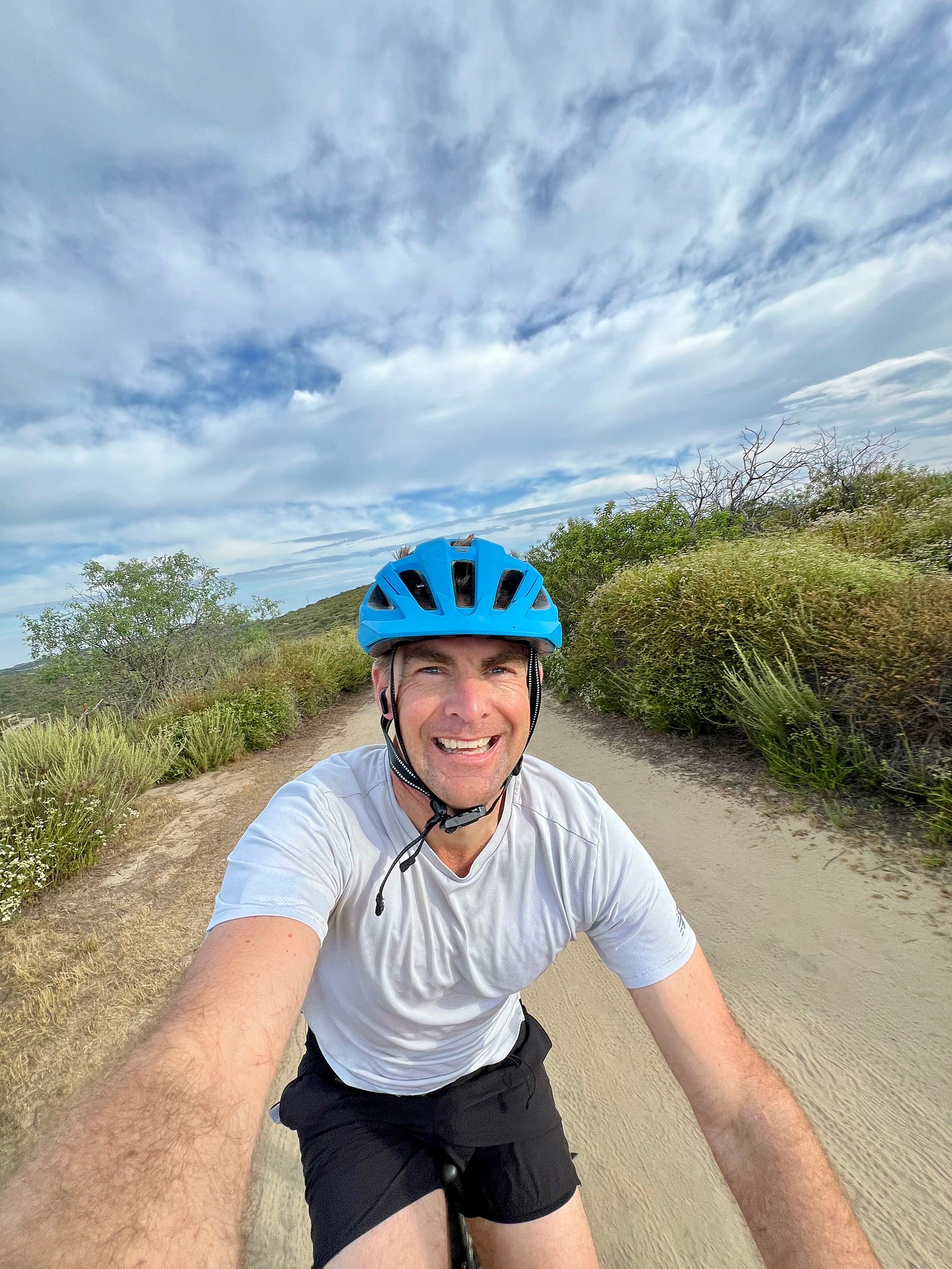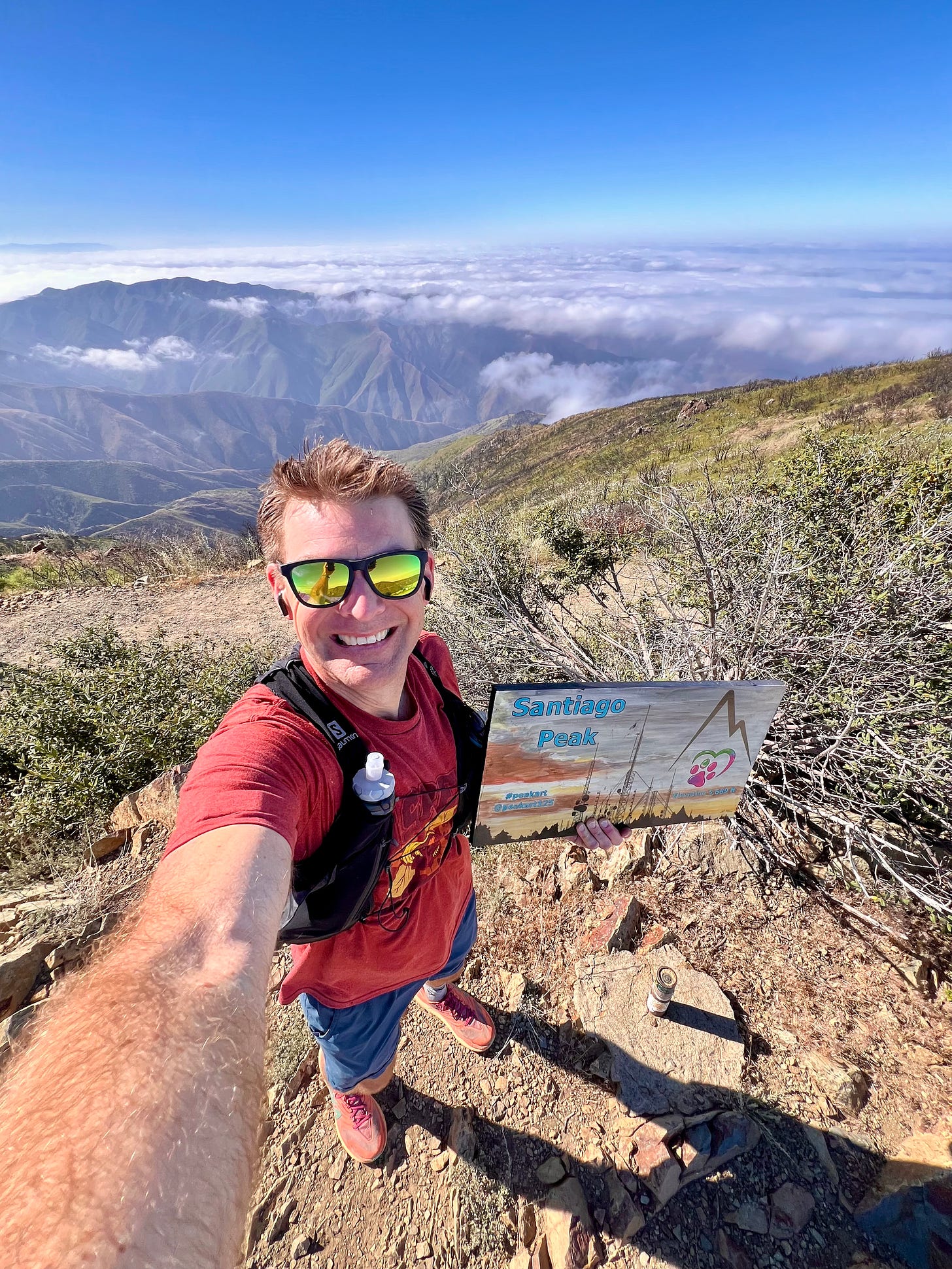Finally, A Running Injury
Here’s what can happen when you ignore the signs.
On one hand, my instinct was right. On the other hand, I chose to ignore it.
After 8 consecutive years of running roughly 45 miles per week (and sometimes 100), I’ve sustained my first serious running injury. It was all my fault. And worse, I felt it coming on.
During the final days of April and the week leading up to the May 4 OC Marathon, which I had signed up for the week prior to pace the 3:25 finishing time, I felt pain in my lower left leg. I chalked it up to early-stage shin splints, and I ran just once that week out of caution. I wasn’t worried about meeting the target pace, and my fitness goal for this event was to get in a high Zone 2 training stimulus for my summer and fall ultras.
Even though I told my colleagues the Friday before that I shouldn’t run the race because I could feel an injury brewing, I ignored my gut and ran it anyway. The rationale: worst case scenario, it would be just a soft-tissue injury that would put me out for just a couple of weeks, max.
Boy, was I wrong.
What started as soft-tissue discomfort ultimately progressed into a bone injury, and we now need to multiply those 2 weeks by 6 (and hopefully by not much more than that). Indeed, what I thought was just going to be a 2-week setback is now going into the start of its 3rd month, thanks to a bone stress injury and anterior tibial edema, confirmed by MRI.
That July 20 Tahoe Trail 50k I planned to run in order to qualify for the Leadville Trail 100? Gone. My plan to run the Cuyamaca 100k (October 4) to earn another ticket for the Western States 100 lottery? At serious risk.
Race Day … and a Play-By-Play of the Aftermath
During the OC Marathon, I felt some discomfort around mile 8. But from that point until the finish, everything felt fine. My gait was normal, and I ran relaxed all the way through the finish with a 3:24:07 chip time.

It wasn’t until after I returned from the drive home that I felt sharp pain on the inside of my calf and stiffness in my ankle. While it’s normal to feel some discomfort after a long effort, an acute hot spot is generally not a great sign. Even worse, when lower leg pain wakes you up in the middle of the night, as it did for the next 3 nights, you know it’s time to seek some professional advice.
To help navigate my recovery, I saw Chris, my sports performance practitioner at Compete Sports, whom I see once every nine months or so. He helped me work the area. His initial assessment didn’t indicate a bone injury, but we were observing it closely.
A week later, with my leg still tender and ankle stiff, I made an unusual follow-up visit for additional soft-tissue work. This time, they brought out some electrodes to help restore blood flow.

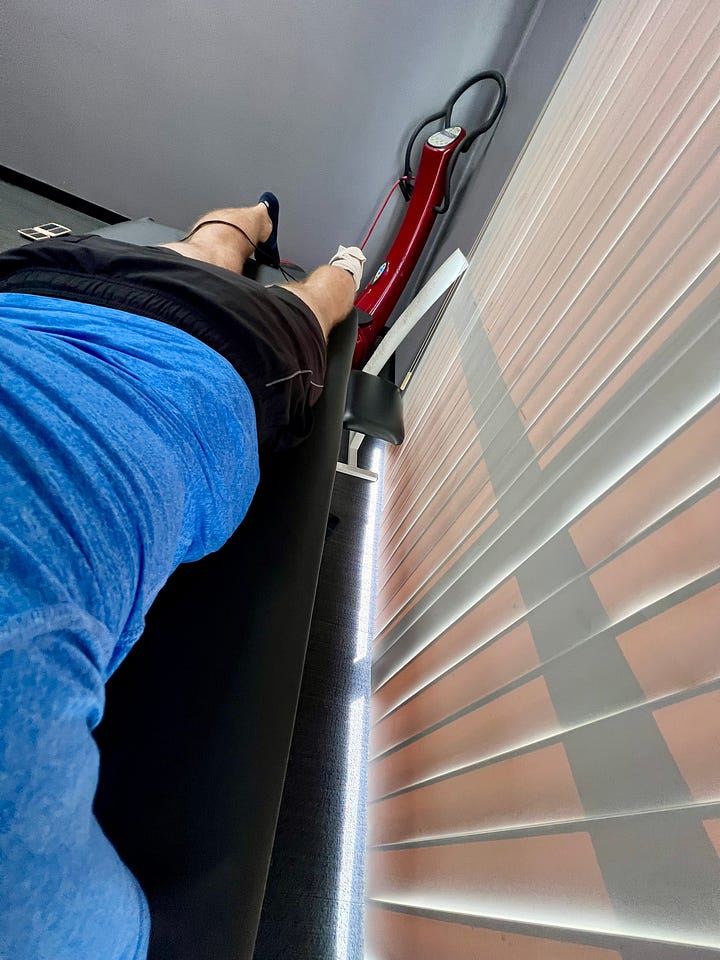
After those sessions, I was hopeful that we’d cracked the code. I could see signs of improvement, but my symptoms persisted. I still walked with a limp, and most steps were mildly painful, a 3 out of 10. I couldn’t get out of the car using only my left foot. There was a strip of tissue along the inside of my lower leg that felt like a strip of bumpy beef jerky when you ran your fingers across it.
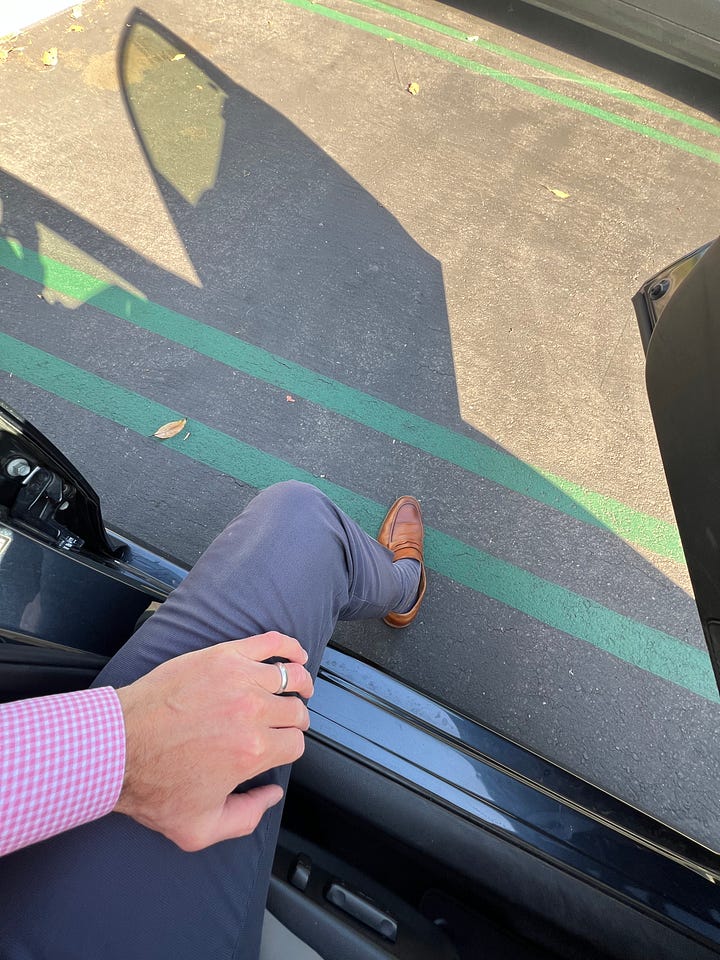

As a last-ditch effort, I scheduled an appointment with an orthopedic doctor for a deeper evaluation. The x-ray came back negative, and Dr. Sall advised to shut it down and call him if symptoms did not improve.
While the acute pain dulled, pain near my tibia persisted. So, I followed up with Dr. Sall, who ordered an MRI, just to be sure.
It took a couple of weeks to get my MRI and then the results. And the outcome, as stated earlier, was what I expected, but hoped not to hear: a bone injury and some soft-tissue damage. (Dr. Sall said that had he’d known of the bone injury upon initial visit, he would’ve put me in a boot. I’ll advocate harder next time.)
Saddle Up
During this 8-week stretch of gradual improvement, but continued, varying levels of discomfort in my lower leg, this curious and stubborn runner knew it wasn’t wise to attempt to run. But, as the evidence indicates, I can be thick-headed, and possibly too optimistic.
During the month of May, I attempted a few tepid shuffles. My first attempt to run, a full 11 days after OC Marathon, was a disaster. I started off with a walk, gradually turned it into a delicate shuffle, and then, as pain shot up my left leg, I shut it down and turned for home just 0.8 miles in. I could barely walk it back.
From there, I accepted my fate and turned my attention to the bike. I figured it would keep things impact-free, while also helping maintain a modicum of fitness. And while I just have a hardtail mountain bike, I’ve found ways to enjoy a blend of road rides during weekday mornings and some legitimate rides in the mountains on the weekends.
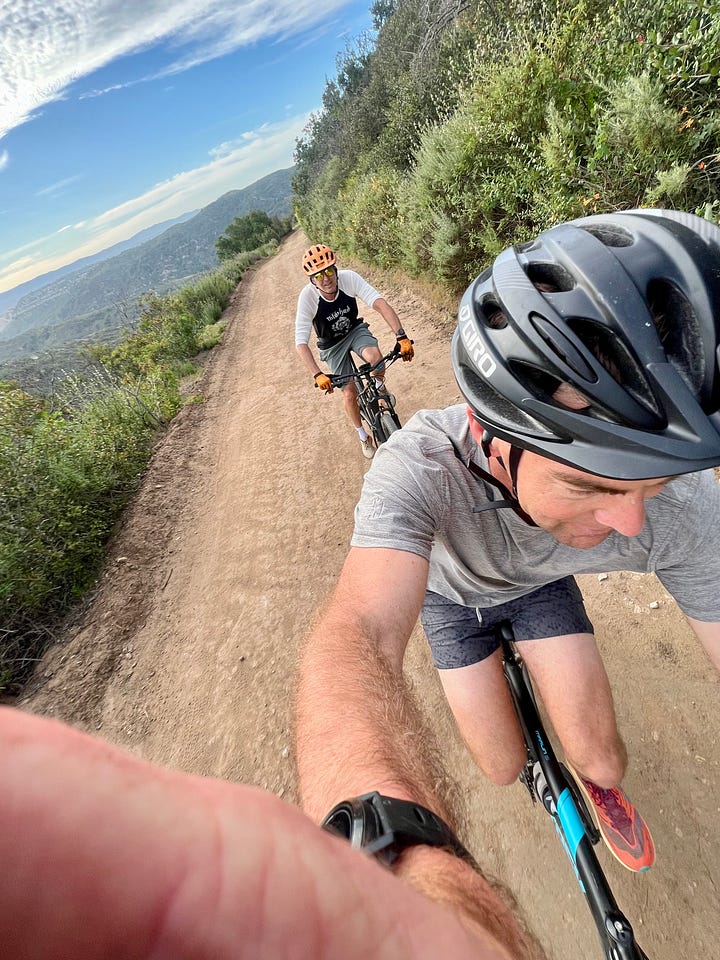
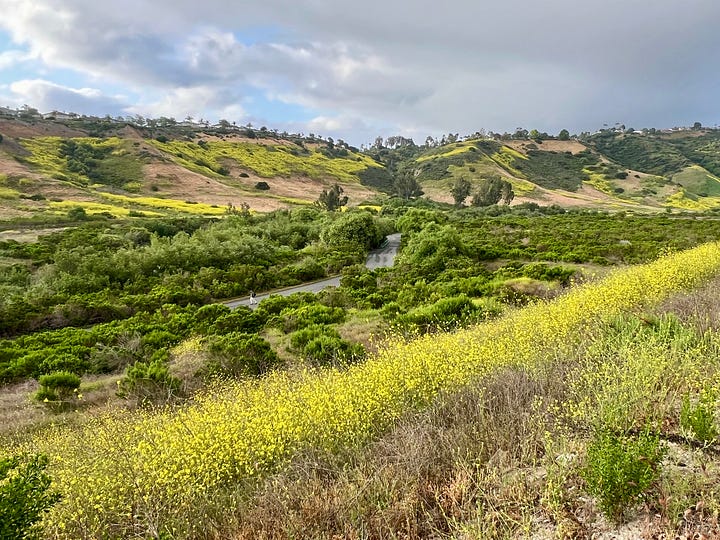
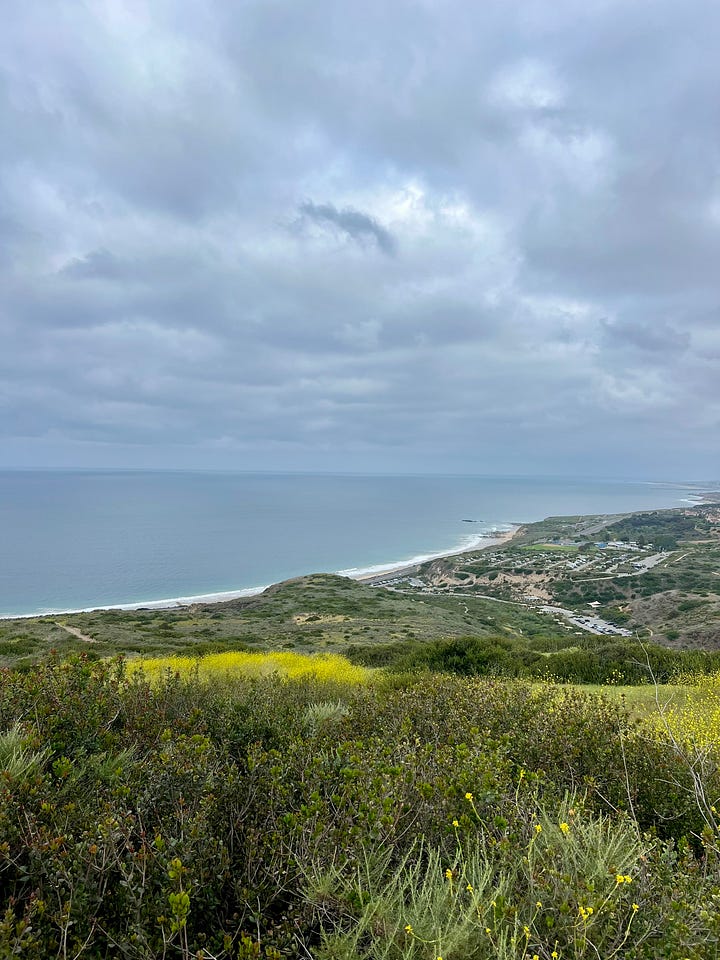
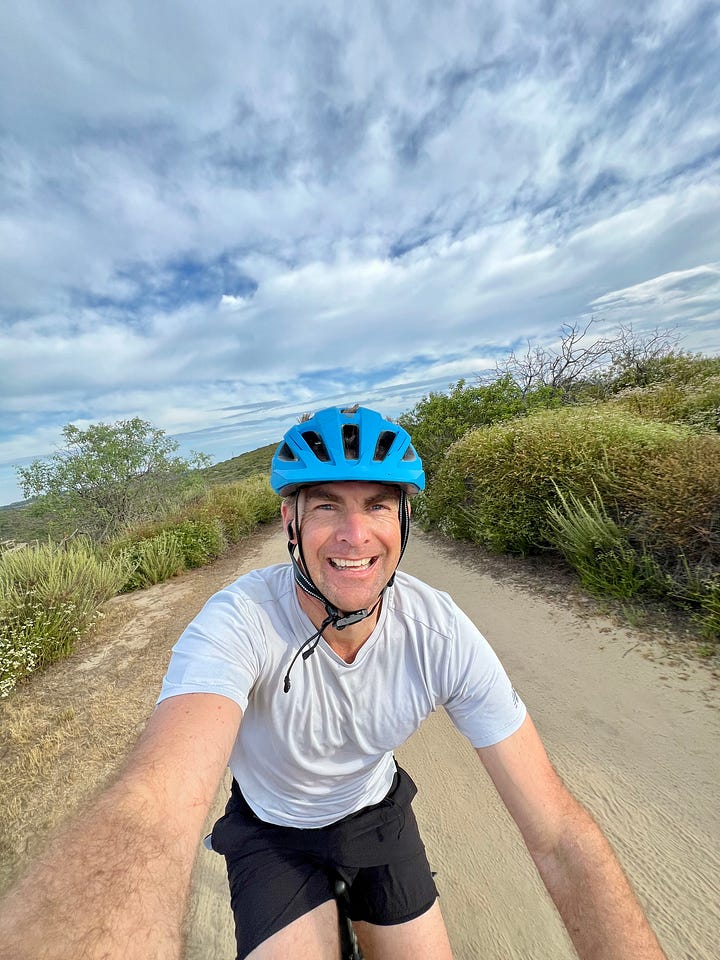
In fact, coinciding with my foray into mountain biking was the reopening of quite possibly my favorite spot in Orange County: Harding Truck Trail. In June, I rode up Harding, a 9-mile fire road in the Santa Ana Mountains that climbs to nearly 4,500 feet above sea level. And while I’d prefer to get to the top on two feet, it’s been a treat to make that climb on my bike. In fact, in June, I rode to the top of Harding – and beyond – on three consecutive Saturdays.
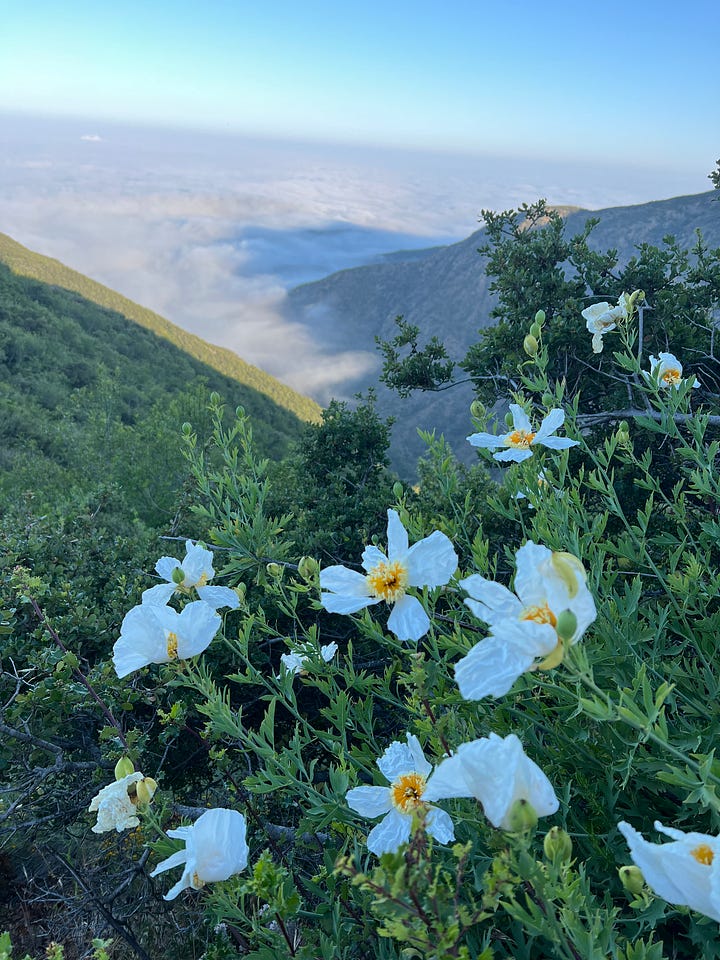
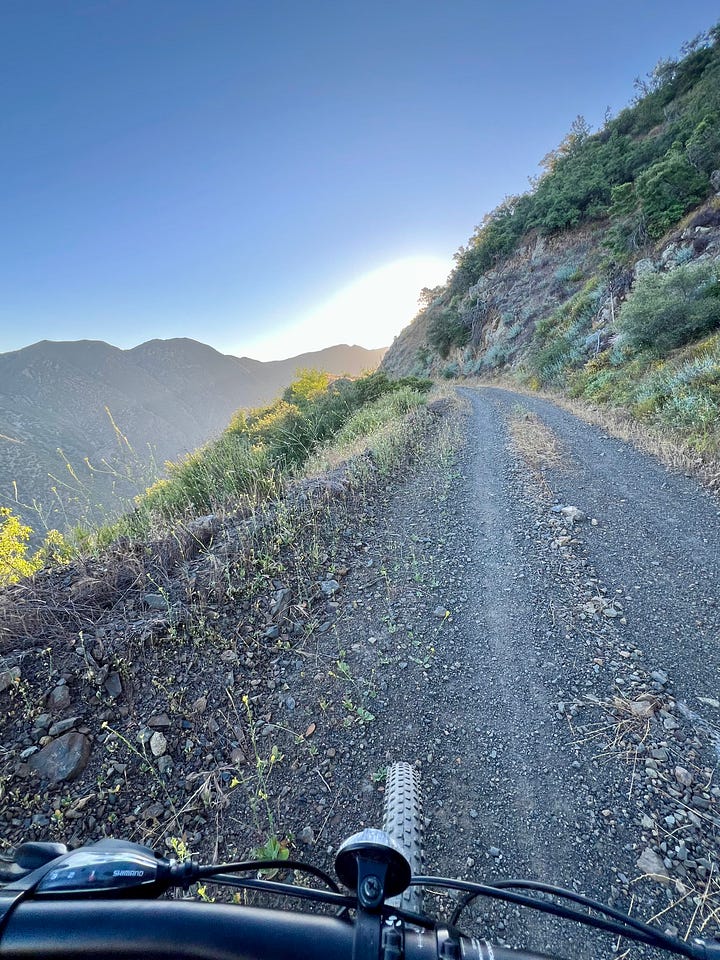
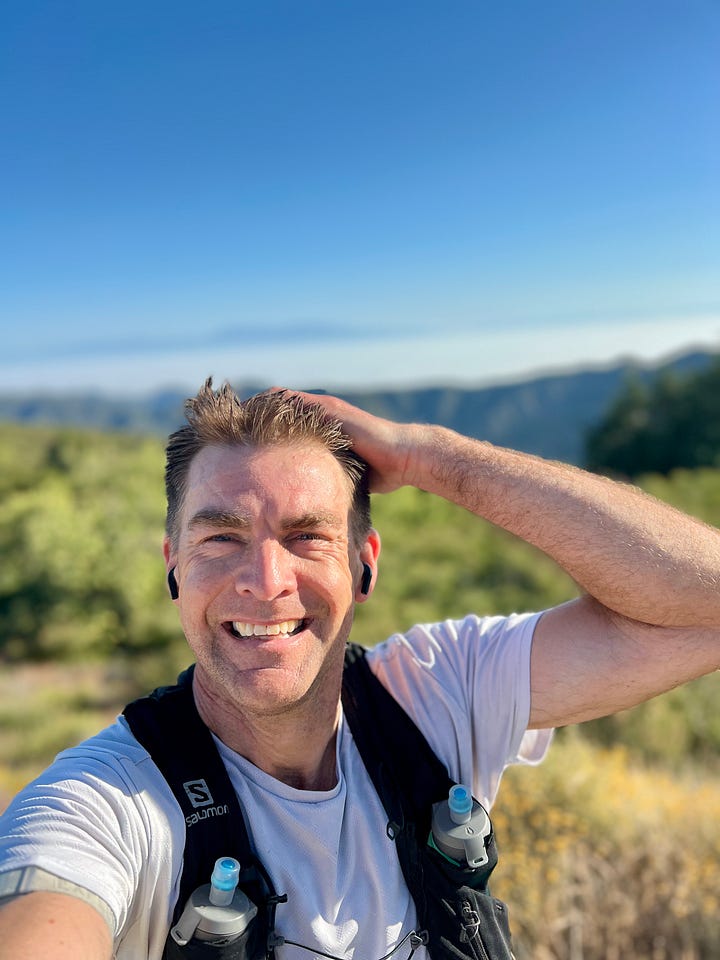

During these adventures, I realized that while I love to run, more than anything it’s the reward of hard work that I crave. Here’s what I wrote after summiting Santiago Peak, the highest point in Orange County at 5,689 feet, on my bike:
We’re officially one month our from Tahoe Trail 50k, and I’m still not running. Not great …
My old self would be panicking, even distraught. But I’ve been surprisingly at ease with this injury. In part it’s because, outside of a couple of bucket-list races, I’ve accomplishing my running goals. Everything else I’ll do is just icing on the cake.
Plus, in the end it’s movement that I crave. You know, doing hard stuff and seeing cool things, no matter the mode of transport.
It’s unlikely I’ll be ready to run Tahoe, and it might not be smart to do so. But by keeping the race on my radar, I get to do whatever I can to maintain fitness. More importantly, it gives me a reason to move. Which I love above all else.
At 47 years old, I’m not as invincible as my old self. And, clearly I need to listen better to my instincts. But, I’m confident that I will come back from this injury. It won’t be as fast as I’d hoped, but it’ll make that comeback much sweeter.
And next time something like this happens, I’ll be a better listener.


